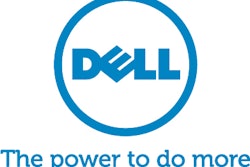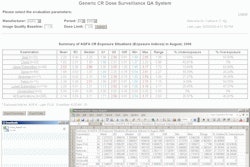
Hospitals may be slowing their IT spending as a reaction to the current economy, but the critical information that the doctors and their patients rely on for diagnosis and treatment continues to grow unabated.
Furthermore, President Obama is pushing for all healthcare providers to embrace electronic medical record (EMR) technology in their practices, and he has devoted significant funds to the initiative in his stimulus plan, so the need for a practical and efficient way to store patient information will grow.
 |
| Bruce Kornfeld, vice president of marketing for Compellent. |
Consider some statistics from a survey conducted by the Centers for Disease Control and Prevention's (CDC) Center for Health Statistics: Of the 2,000 office-based physicians surveyed, 40% use at least minimal EMR technology, or systems that allow for computerized orders for prescriptions and tests, as well as electronic viewing of test results and clinical notes. Only 4% reported using fully functional EMR systems, but 17% of physicians said they use a basic system (one that extends beyond the minimal system and includes the viewing of patient demographics, public health reporting, and other features).1 President Obama's stimulus plan will certainly push those numbers higher still.
However, the practical ability of most hospitals to host more equipment to store and manage increased data is being severely impacted. This is due, in part, to the fact that many data centers are rapidly running out of space while consuming mass quantities of power. Compounding this issue is that to qualify for the stimulus funds, doctors and hospitals must use EMRs in a meaningful way2, which translates into making them easy to manage while providing tangible benefits to patients.
So, while healthcare facilities need to grow their storage capacity to manage these EMRs, they lack the budget, physical space, and energy resources to do this. It's the perfect storage storm. For the budget-challenged healthcare IT manager, the need to do more with less has become a sudden and harsh reality.
Of course, hospitals and other healthcare facilities won't stop investing in storing and managing data. In fact, while Gartner, IDC, and other market analyst firms predict overall declines in IT spending for the rest of 2009, the one consistent area of IT growth is in storage.
The flight to efficiency
Storage efficiency is, naturally, being cited as one of the biggest drivers for companies in all industries in determining their storage spending this year and beyond. This point was confirmed in a study by analyst research firm Enterprise Strategy Group. Its survey of 504 global storage professionals found that budget-conscious storage decisions in 2009 will be driven by efficiency. The survey also identified that specific efficiency-friendly technologies enabling data reduction, intelligent tiered storage, and storage reservation were among the top priorities for the next 24 months.
Interest in these technologies clearly indicates a growing trend -- indeed a flight -- towards efficiency. By boosting the efficiency of their storage infrastructures, hospitals can accommodate growth of patient data such as EMRs and PACS within strictly limited budgets. And they can do all this using a smaller hardware footprint that consumes less physical space and, in turn, draws down less energy. When these technologies are combined, the compounded efficiencies can be dramatic and immediate. It's not uncommon to see 90% utilization improvements over legacy storage capacities, resulting in further significant reductions in energy needs.
It sounds simple enough, but a major hurdle remains. Many companies -- hospitals and healthcare networks included -- often find it difficult to break free from the traditional storage brands, now pilloried for their excessive inefficiencies, to which they've grown accustomed to using. They are also reluctant to move when they look back at the big investment in training and other costs they've incurred.
However, with the economy at the forefront of all major spending decisions, there is now much greater pressure on IT managers to explore new options that deliver greater efficiency. The historical reluctance to transition from the big brands is starting to erode as value and efficiency move to the top of the priority list.
Intelligent technology for extended efficiency
Of these technologies, intelligent tiered storage is often cited as the one with the most direct economic impact to the healthcare IT infrastructure. This includes tiered storage across entire systems as well as within the array itself; indeed, even down to individual disk platters. Tiered storage will have a direct impact on EMRs, as the technology will automatically move patient data to lower (and less expensive) storage tiers as the data ages and is accessed less frequently. This will also allow more records to be kept online and instantly accessible when necessary, but lowers the total cost of storing the data significantly.
The ability to transparently automate the movement of data based on metrics such as frequency-of-use presents a significant advantage over traditional storage systems. Intelligent tiered storage also ensures that data movement is just as easy in both directions, with relegation to a lower tier if it isn't being accessed and promotion to a higher tier when it is needed for patient treatment. This is the bedrock for true storage efficiency in the healthcare environment.
On the horizon
Given that the president's goal is to promote the use of EMRs, which can contain radiology images, allergy and medicine lists, patient histories, lab results, and billing information, there is little doubt that efficient and intelligent storage solutions will become required technologies in the data center. However, with the majority of medical records still in paper format, some hospitals may find themselves unprepared for a sudden increase in electronic records going forward, especially considering that facilities often do not have trained IT personnel to plan and implement the technology. This issue will be compounded by the meteoric rise of data generated by scanning existing paper documents and turning them into electronic ones. The problem is exacerbated by the continuing debate regarding industry-wide and accepted PACS software standards.
As EMR and PACS standards are agreed upon by the healthcare community and new data management applications become the de facto choice to manage patient information, healthcare providers will require an easy-to-manage underlying storage infrastructure that helps them prepare for the changes in the way that digital health data are processed, stored, and used online. And given the sheer volume of data that hospitals will need to store over their patients' lifetimes, an intelligent tiered storage strategy makes the most sense for managing the data over the long term. For the majority of patients, their medical histories and related records are accessed frequently for a few days or weeks, and rarely accessed or read afterward. With automated tiered storage, hospitals can house that data online on less-expensive tiers of storage disks, while current patient information resides on high-performance drives for slightly quicker access.
In the end, it's about efficiency
To truly reap the benefits of an efficient data center, healthcare IT managers need to ramp up their knowledge of intelligent tiered storage and implement the technology as a central platform for their future strategy, whether they're managing EMRs, PACS, e-mail, or payroll. Not only will this help solve the immediate pain points associated with rapid data growth, space, and energy, but it can just as directly benefit their ability to provide the strong IT backbone doctors and nurses need to provide appropriate patient care. In this period of economic uncertainty, a healthy obsession with efficiency will be the key to weathering the storm.
By Bruce Kornfeld
AuntMinnie.com contributing writer
October 16, 2009
Bruce Kornfeld has served as the vice president of marketing for Compellent, a provider of enterprise-class, virtualized storage solutions, since January 2006. Before joining Compellent, Bruce spent more than eight years at Dell, most recently as director of worldwide marketing for server and storage enterprise products.
References
- HealthBeat.org. Nearly 40% of office-based doctors use EHRs, survey finds. December 12, 2008.
- American Medical Association. American Recovery and Reinvestment Act of 2009, Summary of major healthcare provisions (as of 02/10/09).
Copyright © 2009 Compellent



















